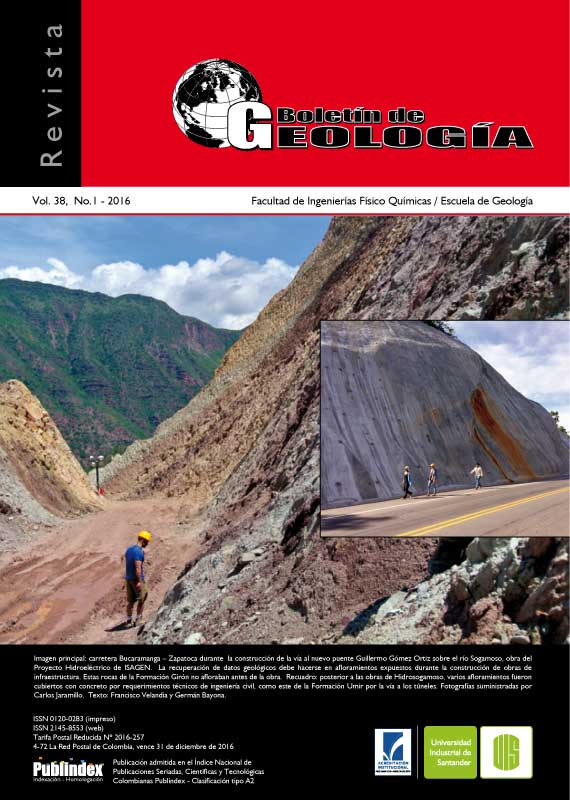Articles
PROVENANCE AND SEQUENCE ANALYSES IN FINE-GRAINED SEDIMENTARY SUCCESSIONS: A CASE STUDY OF THE UMIR FORMATION AND BASE OF THE LISAMA FORMATION IN THE SIMACOTA AREA (SANTANDER, COLOMBIA)
Published 2015-12-07
Keywords
- Umir Formation,
- flooding surfaces,
- sedimentology,
- palynology,
- environmental interpretation
How to Cite
Montaño, P. C., Nova, G., Bayona, G., Mahecha, H., Ayala, C., Jaramillo, C., & De La Parra, F. (2015). PROVENANCE AND SEQUENCE ANALYSES IN FINE-GRAINED SEDIMENTARY SUCCESSIONS: A CASE STUDY OF THE UMIR FORMATION AND BASE OF THE LISAMA FORMATION IN THE SIMACOTA AREA (SANTANDER, COLOMBIA). Boletín De Geología, 38(1), 51–72. https://doi.org/10.18273/revbol.v38n1-2016003
Altmetrics
Abstract
Marine and lacustrine flooding events are key surfaces in sequence stratigraphy. However, the identification of flooding events in homogeneous, fine-grained continental successions using only lithofacies analysis may be a challenge. Integrated lithofacies, biostratigraphic and provenance analysis of the upper Campanian to Maastrichtian Umir Formation allowed the identification of 5 flooding surfaces (FS), and one FS at the base of the Lisama Formation. The lithofacies association below the FS includes heterolithic sandstones with organic matter bearing siltstones and coal seams, whereas above the FS there are claystones with amorphous organic matter, marine and brackish-water pollen. The Umir Formation depositional system includes swamps with weak marine ingression, swamp-marginal deposits and the interface of swamp-fluvial systems. The upper segment of the Umir Formation has an aggradational to progradational stacking pattern, recording a sequence boundary and a maximum flooding surface. The base of the Lisama Formation contains oxidized floodplain and channel-fill deposits interrupted by a marine flooding event, whose origin is more catastrophic than being the product of gradual eustatic changes. The sandstone composition of the Umir Formation is quartzarenite with sedimentary lithic fragments, while for the Lisama Formation varies from sublithoarenite to quartzarenite, with sedimentary and metamorphic lithic fragments. This change suggests that the depositional system was bordered by a recycled orogen. The record of debris flows with fragments of cretaceous sedimentary cover, the progradation of the swamp-fluvial system, and the change in composition and grain size of terrigenous detritus are related to the contemporaneous tectonic activity in the Central Cordillera and the western flank of the Eastern Cordillera since latest Maastrichtian to early Paleocene timeDownloads
Download data is not yet available.
